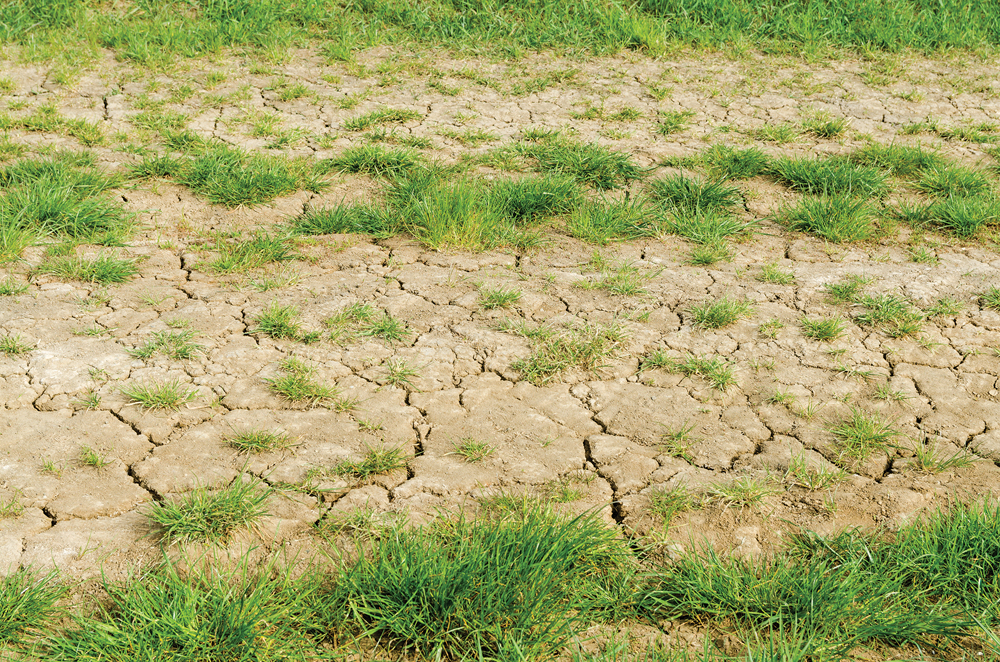Prairie farmers have learned to temper their yield expectations after a dry growing season, especially in a year like this when many areas started with little to no soil moisture reserves. Reduced crop growth is a clear symptom of drought but what isn’t so obvious is what’s happening — or rather, what’s not happening — below ground.
Poor plant growth leads to reduced nutrient uptake, which leaves more residual nutrients, especially nitrogen, in the soil. Drought also causes important chemical and biological processes, like denitrification and assimilation, to slow down or stop altogether. As a result, much of the applied fertilizer may remain unused, and nutrients applied on the surface may also be stranded due to lack of rainfall.
Read Also

Claas brings 1000 Series SP forage harvesters to Canada
In mid-August, Claas unveiled its new line of Jaguar forage harvesters at an event in Visalia, California, deep in the heart of that state’s dairy region.
According to Farmers Edge agronomist Thom Weir, what this means is a general increase in soil nutrient levels — which may persist for years. Nutrient levels will typically also vary widely across a field, which can have a significant effect on a farmer’s fall fertility plans.
Weir says the drier a soil is, the more variability you’ll likely see in a field. That’s because drought accentuates differences in soil texture and moisture as well as in crop growth and nutrient uptake. To get the clearest picture of nutrient levels in their fields, Weir believes farmers considering a fall fertilizer application should test their soils first.
“Before anybody starts putting anything down in the fall, and especially in coming off of a dry year, they should do soil testing. You don’t know what’s left,” he says.
John Heard is a soil fertility extension specialist with Manitoba Agriculture. Like Weir, he believes if dry conditions persist on the Prairies, fall soil testing can benefit farmers by helping them determine the right fertilizer application rates.
“A great advantage we have in the Canadian Prairies is the fall soil test works, and so what we measure in the fall is a very good reflection of what we end up with in the spring for the next growing crop,” Heard says. “It’s a very important tool to use to assess any residual nitrogen.”
Benefits of zone sampling
Weir maintains when it comes to sampling soil in the fall after a dry year, it’s important for farmers to have a clear objective in mind. If farmers’ goals are to maximize the efficiency of their fall fertilizer applications, he suggests zone soil testing is the best way to go.
Weir says when he talks to growers about zone sampling, there are three questions he asks them about their fall fertilization goals:
- Do you want to get more yield from the same amount of fertilizer?
- Do you want to get the same yield by using less fertilizer?
- Do you want to improve crop quality?
“From there, you can develop your fertilizer plan based on those needs,” he says.
The most common form of soil testing is composite sampling, which involves taking samples in a random pattern across a field, while avoiding unusual or problem areas. For zone sampling, fields are divided up into different sectors or zones — examples would be areas with contrasting soil types, or areas with below-average, average or above-average yields.
Weir says by sampling soils in similar areas that make up a zone, this factors in wide variations in nutrient levels, which can occur in drought conditions, and can provide farmers with a better understanding of what their fall fertilizer plans should look like.
“If you go to a provider that is able to provide mapping of the field and zone delineation, you then can go in and say (there are) eight zones in this field that are acting similar,” he says. “We’ll take our samples out of those eight zones and come up with a more focused view of what’s happening on that field.”
Zone sampling and variable-rate applications
Weir believes zone soil sampling in the fall is also an excellent opportunity for producers considering variable-rate nutrient applications for their farms.
For best results, Weir says at least 15 soil samples should be taken per zone. He suggests in a dry year, it’s not a bad idea to increase the number of samples in each zone, which will account for high variability and provide a better assessment of nutrient needs.
Weir notes because there’s less biological activity in dry soil, it may be possible to start soil sampling fields a bit earlier than usual. He cautions, though, test results could be skewed if there’s any rain before the soil temperature falls below 10 C, since this can cause the nitrogen in anhydrous ammonia to be converted to other forms and be lost.
Soil mapping: An art and a science
Soil mapping technology and sample analysis have come a long way in recent times. Weir, whose business is among those companies offering these services to western Canadian farmers, says the way most providers go about creating zone soil maps for guiding fall fertility is to combine yield maps from the previous year with satellite images of the current crop.
“Each one has (its) own special ‘11 herbs and spices’ recipe. But for the most part, those are the two things most commonly used,” he says.
Weir doesn’t view zone soil mapping as an exact science, and he feels producers should be part of the process since most will have a good feel for the land, especially if they’ve farmed it for many years.
“It’s not (like) you can put (data) into the computer and hit the button and come up with the answer. It has to be a collaboration (with) the farmer,” says Weir.
“Creating a zone map is a combination of art and science. And, for the most part, guys with grey beards and (who) have been around for a while probably have more experience and could put more into the art, and then balance it with the science.”
Weir notes if farmers are unsure of anything they see in a zone soil map, it might make sense to head to the field to ground proof those areas.
“My challenge would be for farmers to make sure they’re involved,” he says. “If they’re getting zone maps done … (try to) dedicate a half day to the provider and spend time with them and make sure you’re comfortable with those maps.”
















